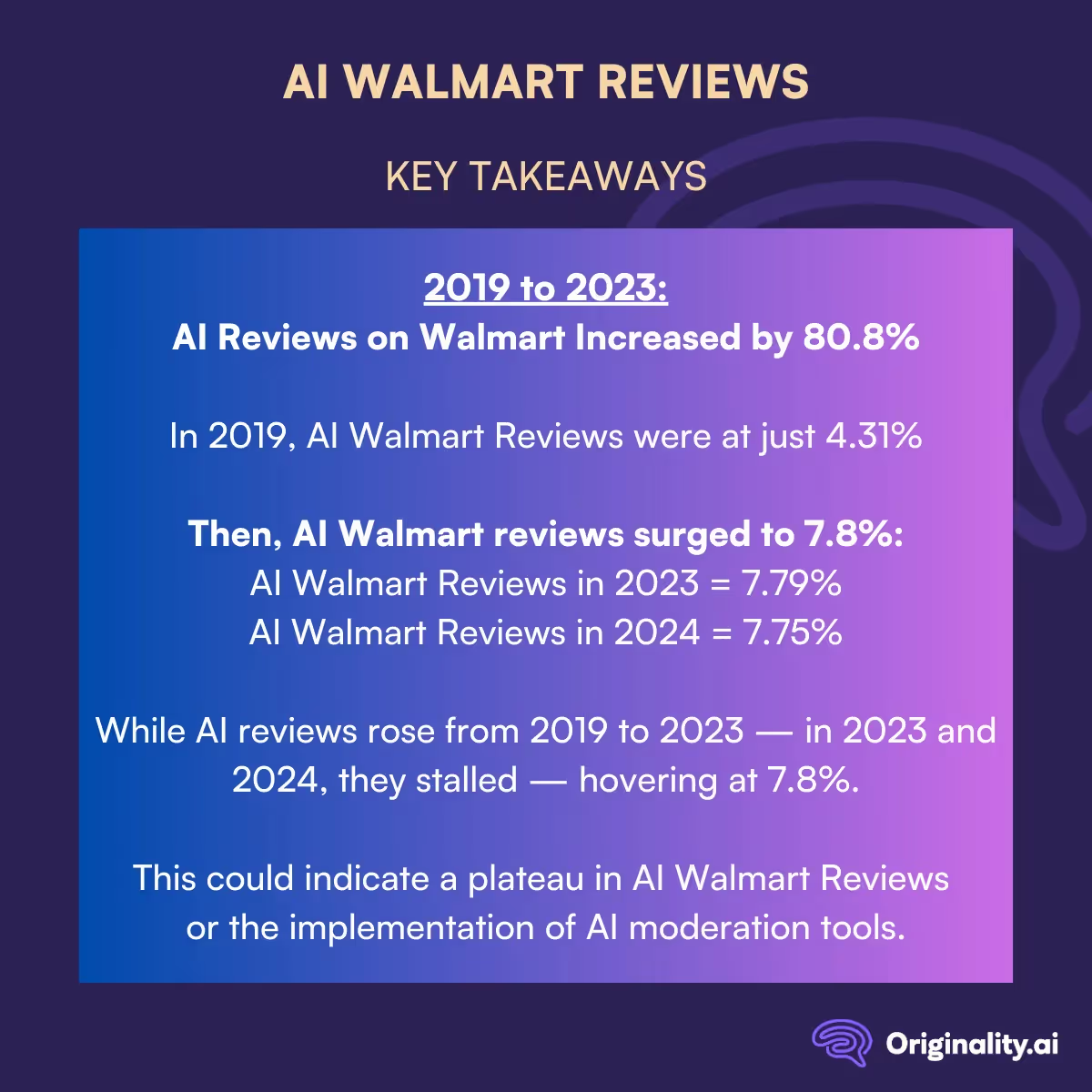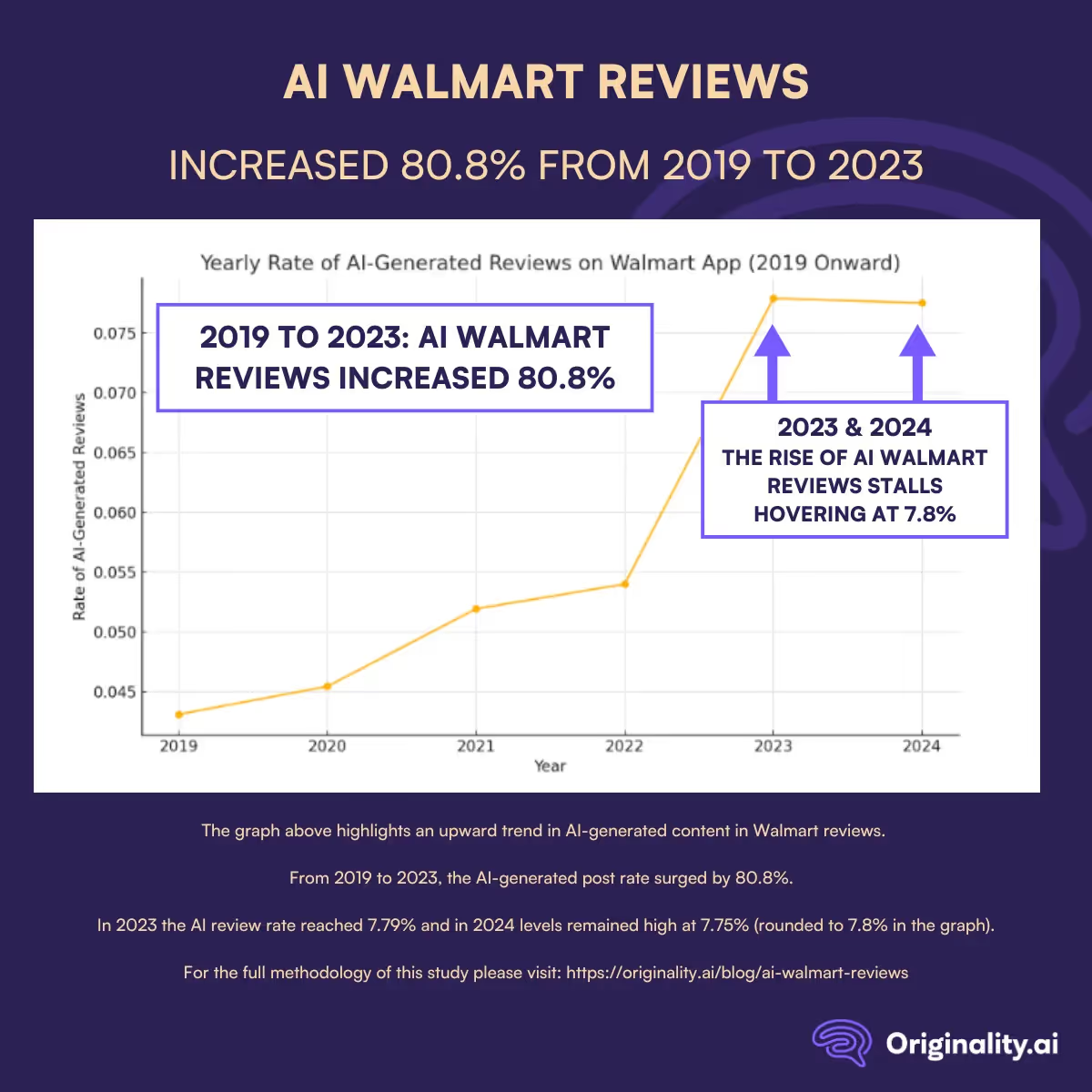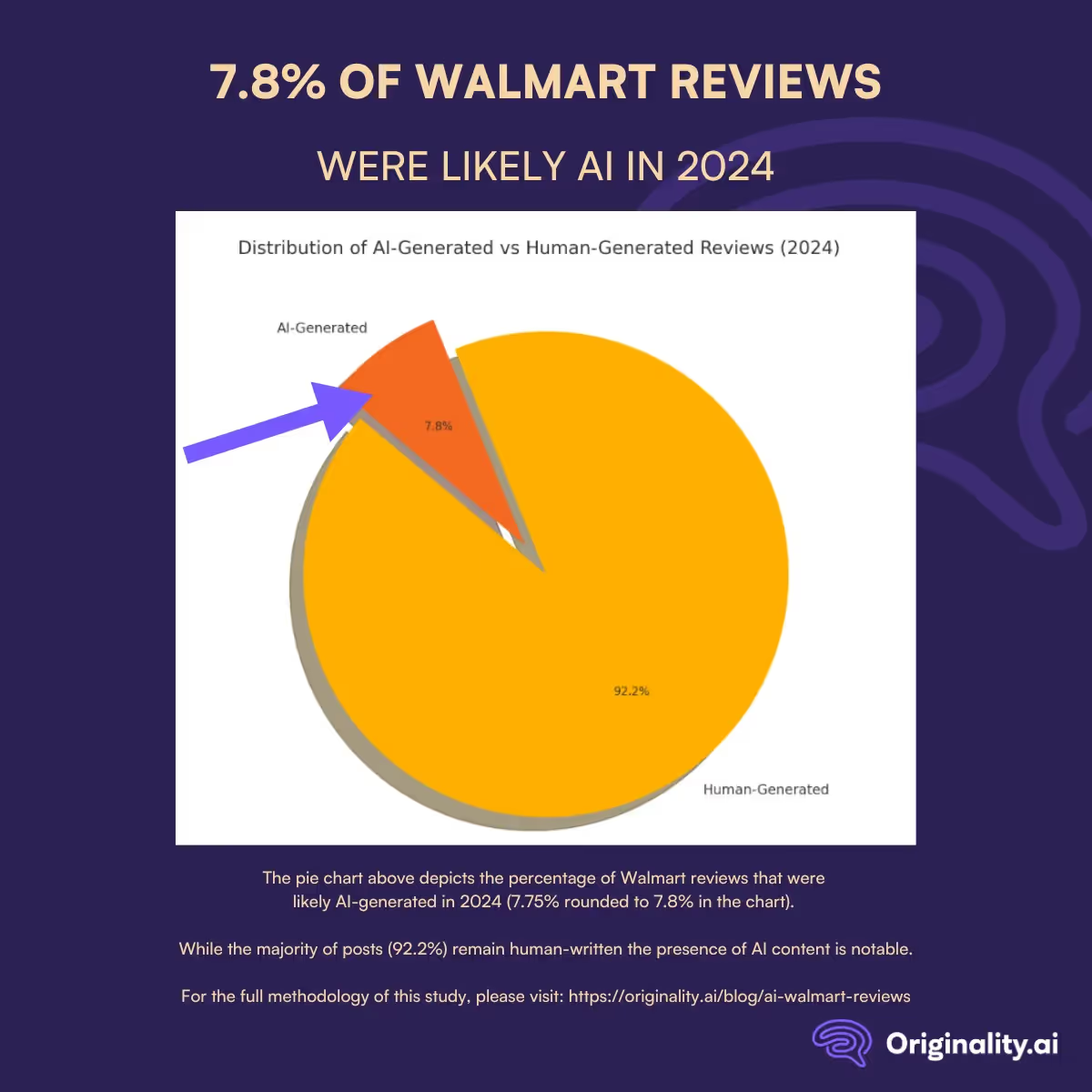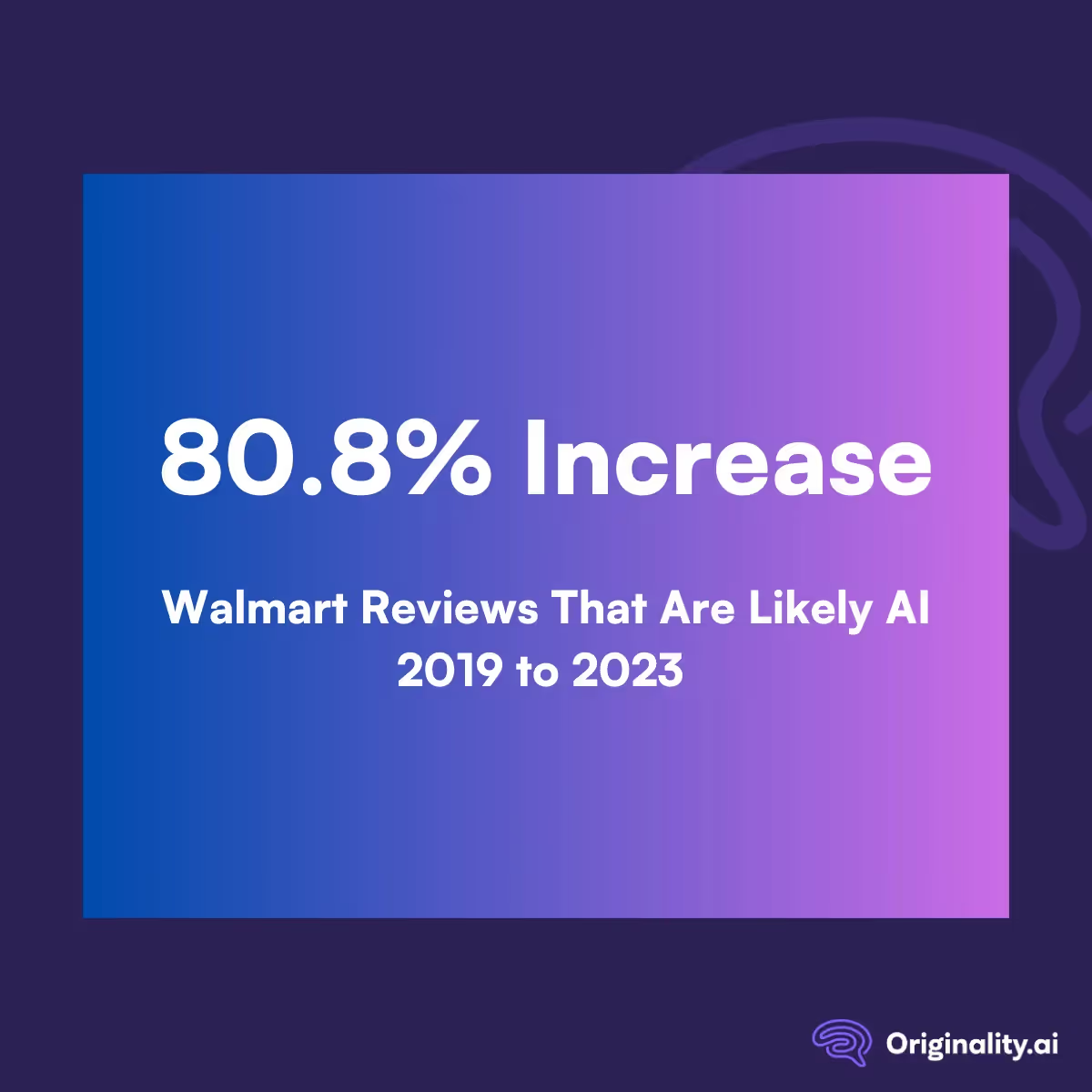Customer reviews are critical to informing customer decisions and can impact a brand’s reputation. With the widespread availability of AI tools, there is a rising concern that some online reviews may be artificially generated.
The implications of this are notable, due to fake reviews potentially misleading consumers and distorting perceptions of product quality.
From previous studies, we’ve seen countless examples of the impact of AI in reviews across Flipkart, Alibaba Shopping App, AliExpress, and TripAdvisor.
This study focuses specifically on the Walmart mobile application, one of the most popular e-commerce platforms with 1 Million+ downloads.
By systematically analyzing a representative sample of product reviews from the Walmart app, this research aims to quantify the extent of AI-generated content and identify patterns related to product categories, consumer sentiment, and temporal trends.


The analysis of AI reviews on the Walmart app from 2019 to 2023 reveals a noticeable upward trend in AI content.
This represents an overall 80.8% increase in AI reviews from 2019 to 2023.
While the rate of AI reviews was initially slow, the trend began to accelerate, suggesting broader adoption of AI text-generation tools over time.
Such a marked rise suggests that AI content generation tools — such as ChatGPT and similar technologies — may be increasingly used to write app reviews, whether by users, developers, or third parties.
However, it’s worth noting that from 2023 to 2024, the rate of AI-generated reviews on Walmart stalled at 7.8%. Suggesting that initial interest in AI tools to create reviews on Walmart may have reached a plateau.
Alternatively, Walmart may have integrated moderation tools for AI detection to monitor the use of AI content on their app.

The sharp rise in AI-generated reviews from 2022 to 2023, and the presence of 7.8% AI reviews on Walmart in 2024 (depicted in the pie chart above), suggests a shift in how frequently people and brands are relying on generative AI for producing reviews.
This increase in usage can likely be attributed to the significant improvements to generative AI models as they become more accessible and integrated into daily life.

This trend has important implications. The growing presence of AI-generated content could impact consumer trust and decision-making, particularly if AI reviews are used to manipulate product ratings or misrepresent customer sentiment.
Retail platforms like Walmart may need to consider enhancing their detection and moderation systems to ensure review authenticity and maintain consumer confidence.
As we move into 2025, it will be critical to continue monitoring these rates to understand how the influence of AI-generated content evolves in digital marketplaces
In summary, the results of this study show that generative AI’s influence continues to grow in online marketplaces, further highlighting the importance of robust AI content detectors and consumer awareness.
From our findings, it’s clear that a significant portion of Walmart reviews show all the tell-tale signs consistent with AI generation.
With e-commerce continuing to grow and customer reviews remaining one of the most important brand trust indicators, Walmart must consider the following:
Considering the plateau in AI content on Walmart Reviews from 2023 to 2024, they may already be integrating moderation tools into the platform. We’ll monitor this trend in time to see if the plateau is temporary or continues.
Do you have concerns over whether a post or review you’re reading might be AI-generated? Use the Originality.ai AI detector to find out.
Read more about the impact of AI on online platforms:
This study used a systematic approach involving data collection, preprocessing, AI detection, and analysis to assess AI-generated customer reviews on the Walmart mobile app.
The final dataset was analyzed for patterns in AI-generated content, including overall prevalence, correlations with ratings or engagement, and time-based trends.
This structured method enabled a reliable assessment of AI-generated reviews, offering insights into their potential impact on consumer behavior and retail practices.
